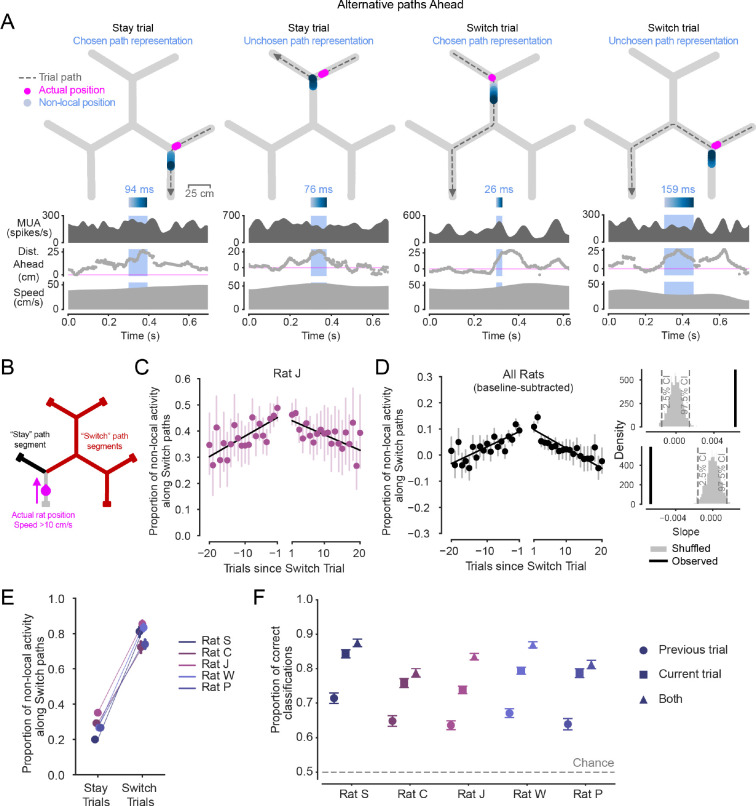Figure 2. Non-local representations of alternative paths Ahead are enriched across trials before and after patch Switching.
(A) Examples of non-local representations of alternative paths ahead on Stay and Switch trials. As the animal approaches the choice point, the hippocampus can represent the Stay or Switch path ahead. Top: Animal’s actual position (magenta) and decoded position from hippocampal spiking (blue, shaded by time) during the light blue-highlighted period (below) are plotted on the track. Dashed grey line with arrow indicates animal’s path and direction on the current trial. Highlighted non-local duration is labeled above blue time-shaded heatmap. Top-middle: multiunit spike rate from hippocampal tetrodes before, during, and after highlighted non-local representation. Bottom-middle: Distance from actual position to decoded position, with positive values corresponding to in front of the animal’s heading, and negative numbers corresponding to behind the animal’s heading. Note that blue non-local periods are required to have representations in a different track segment from the animal’s actual position. Bottom: Animal speed.
(B) Schematic defining Stay and Switch non-local activity ahead, analyzed in C-F. Non-local activity was analyzed from times in which the animal was running >10 cm/s from the reward port to the first choice point in the trial (magenta) by assessing the per-trial proportion of time in which non-local activity extended along the path ahead consistent with Switching (red) out of all non-local activity times along both the Stay (black) and Switch (red) paths.
(C) Proportion of all non-local activity that represents paths consistent with Switching during the approach of the first choice point across Stay trials preceding and following Switch trials in one rat. Left and right x axes separated to reflect patch change. Error bars are 95% CIs on the mean. Linear regressions show increasing and decreasing proportions across trials before and after patch Switch trials.
(D) Left: Proportion of all non-local activity that represents paths consistent with Switching during the approach of the first choice point across all animals (n=5 rats), normalized per animal by subtracting off the average baseline proportion on Stay trials. Error bars are 95% CIs on the mean. Pre- and post-Switch linear regressions overlaid. Upper right: observed slope of pre-Switch regression (black) is significantly different from 0 (p<0.002) based on 1000 shuffles of the underlying data (grey). Lower right: observed slope of post-Switch regression (black) is significantly different from 0 (p<0.002) based on 1000 shuffles of the underlying data (grey). Both slopes were individually significant in all five animals (Fig. S2A).
(E) Proportion of all non-local activity that represents paths consistent with Switching during the approach of the first choice point in each animal on Stay trials and Switch trials. Error bars are 95% CIs on the mean. The proportion on Switch trials is greater than on Stay trials for all animals (p=2.7e-192, 4.2e-108, 1.0e-100, 2.1e-315, 1.6e-201, Wilcoxon rank sum test, for n=313, 335, 523, 422, 452 Switch trials, and n=3349, 3803, 5600, 5028, 3294 Stay trials).
(F) Cross-validated accuracy of logistic regressions that predicted Stay or Switch choices based on the proportion of all non-local activity that represents paths consistent with Switching during the approach of the first choice point. Neural data from each of three trial types: previous trial (circle marker), current trial (square marker), or both (triangle marker). Error bars are 95% CIs on the proportion. Training data were balanced, so chance level was 0.5. Accuracy of model using previous trial neural data is significantly greater than chance level in all animals (p=3.2e-63, 1.1e-43, 4.0e-133, 9.7e-131, 3.3e-60, Z test for proportions), accuracy from model using current trial neural data is greater than accuracy from model using previous trial neural data (p=2.3e-39, 7.0e-27, 6.0e-33, 2.8e-46, 6.3e-43), and accuracy of model based on both trials is greater than accuracy of current trial model (p=1.1e-4, 1.2e-3, 4.3e-39, 4.9e-26, 5.6e-3).

